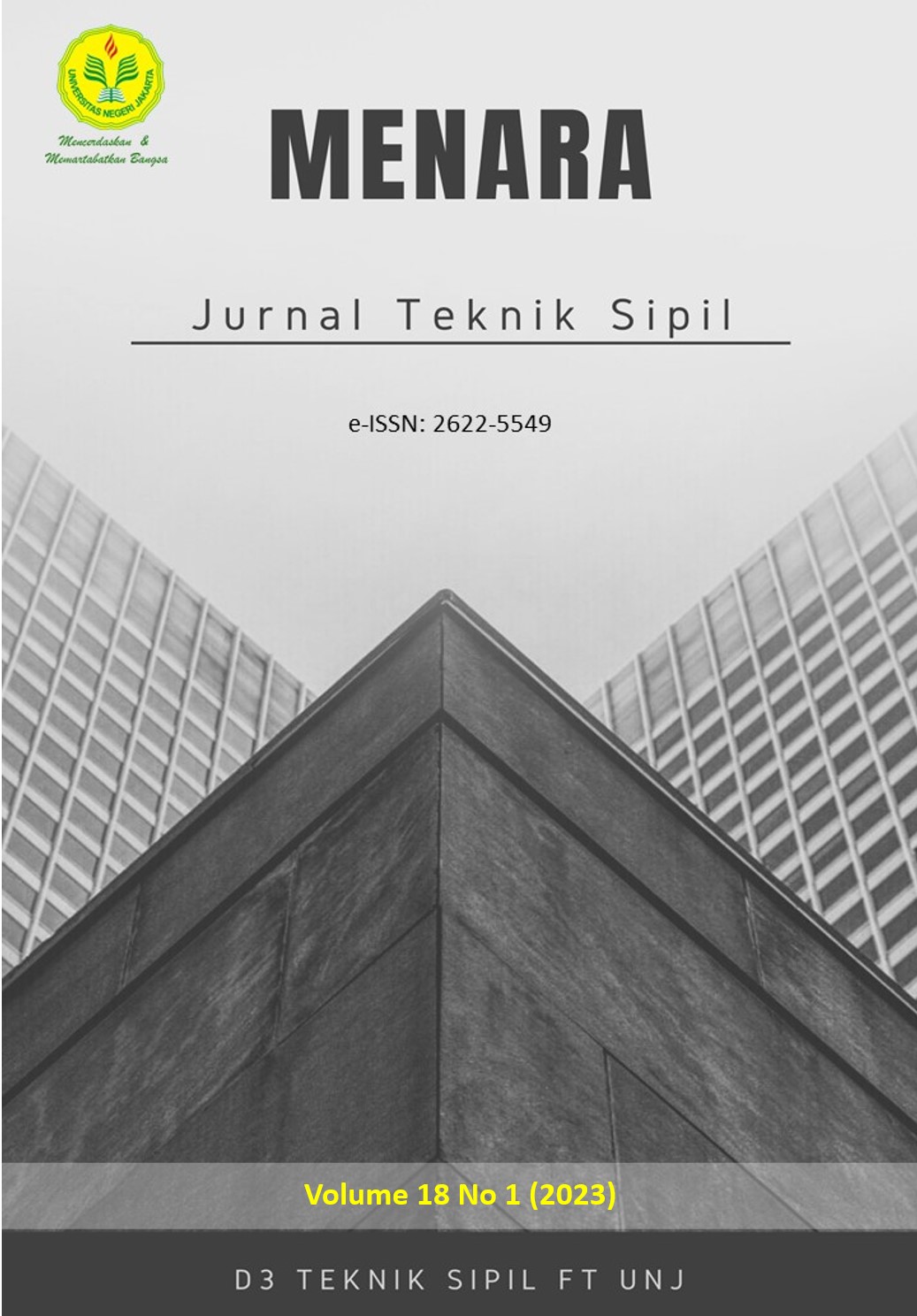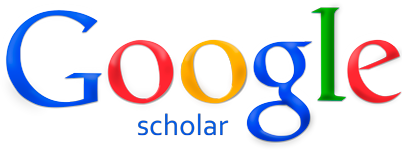PENGARUH MOTIVASI TERHADAP PRODUKTIVITAS KERJA PADA PROYEK REVITALISASI RUMAH SUSUN GUDMURA PALDAM KOTA AMBON
DOI:
https://doi.org/10.21009/jmenara.v18i1.28796Keywords:
construction work, motivation, productivityAbstract
This study aims to determine the Effect of Motivation on Work Productivity in the Gudmura Paldam Flats Revitalization Project in Ambon City. The method used in this study is quantitative analysis method. Subjects in this study were 20 samples. Primary data collection techniques through questionnaires and secondary data collection through literature research. While the data analysis methods used are quantitative descriptive data analysis, validity test, reliability test, f test (anova), t test. The results show, based on the t test as follows: 1. The need obtained t-count -1.937 > t-table 2.101 and the probality value sig 0.071 > 0.05 then the decision taken HO accepted and HI rejected. 2) Environment obtained t-count 2,296 > t-table 2,101 and the probality value was sig 0.036 > 0.05 then the decision taken by HO rejected and HI accepted. 3) Workers' wages obtained t-1,559 < 2,101 and the probality value was sig 0.139 > 0.05 then the decision taken was HO accepted and HI rejected. The motivation variable has a positive and significant effect on the environment because the t-count value is obtained 2,296 > t-table 2,101 and the probality value is sig 0.036 > 0.05 it has an influence on work productivity.
References
A.H Maslow.(1943). A Theory of HumanMotivation”Psychological Review, hal.370; A.H Maslow, Motivation and Personality (New York; Harrper and Row,(1954).
Anthony, R. (1965) Planning and Control Systems: A Framework for Analysis. Division of Research, Graduate School of Business Administration, Harvard University, Boston.
Anwar Prabu Mangkunegara, (2000), Manajemen Sumber Daya Manusia Perusahaan, Cetakan Ke-2, PT. Remaja Rosda Karya, Bandung.
Arikunto, Suharsimi, (1996). Prosedur Penelitian Suatu Pendekatan Praktek, Edisi ke-3, Rineka Cipta,Jakarta.
Chukwuma, E.M., & Obiefuna, O. (2014). Effect of Motivation on Employee Productivity : A Study of Manufacturing Companies in Nnewi. Journal of Managerial Studies and Research 2 (7).
Danang Sunyoto. (2015). Manajemen dan Pengembangan Sumber Daya Manusia (Cetakan Pertama). Yogyakarta : CAPS (Center for Academic Publishing Service).
Dessler, (1997). Manajemen sumber daya manusia. Jakarta: Py. Prenhallindo.
Ervianto, I., W.,( 2004). Teori-aplikasi manajemen proyek konstruksi, Penerbit : andi Yogyakarta.
Ervianto, I.,W.,(2008), “(Pengukuran Produktivitas Kelompok Pekerja Bangunan Dalam Proyek Konstruksi (Studi Kasus Proyek Gedung Bertingkat Di Surakarta)”, Jurnal Teknik Sipil, (Vol.9, no. 1, p31-42. Diakses pada tanggal 5 Oktober 2015).
Gitosudarmo dan Sudita. (2000). Perilaku Organisasi. Yogyakarta:BPFE.
Gibson J.L, Ivancevich John M., & Donnelly James H. (1996). Organisasi Perilaku Stuktur dan Proses, Jakarta: Binarupa Aksara.
Handoko, T. Hani. (2009). Manajemen. Yogyakarta: BPFE-Yogyakarta.
Hasanah, A. S. (2020). Pengaruh Kemampuan dan Motivasi terhadap Produktivitas Kerja Karyawan pada Perusahaan. Juripol, 3(1), 85–92.
Herzberg, Frederick. B. Mausner (1959). The Motivation to Work. New York. John Wiley & Son.
Kussriyanto, Bambang. (1984). Meningkatkan Produktivitas Karyawan. Jakarta : PT. Pustaka Binaman Pressindo.
Luh Sri Kumbadewi, I Wayan Suwendra 1, Gede Putu Agus Jana Susila (2016). Pengaruh Umur, Pengalaman Kerja, Upah, Teknologi dan Lingkungan Kerja Terhadap Produktivitas Karyawan. e-Journal Bisma Universitas Pendidikan Ganesha.
Munandar Ashar Sunyoto, (2001), Psikologi Industri dan Organisasi, Jakarta: Universitas Indonesia, (2001).
Moh. Nazir. (1983). Metode Penelitian. Jakarta : Ghalia Indonesia.
Rahmadita, I. (2013). Hubungan Antara Konflik Peran Ganda Dan Dukungan Sosial Pasangan Dengan Motivasi Kerja Pada Karyawati Di Rumah Sakit Abdul Rivai-Berau. eJournal Psikologi. Vol 1, No 1, 2013: 58-68.
Robbins, Stephen P & Judge, Timothy A. (2013). Organizational Behavior Edition 15. New Jersey: Pearson Education.
Robbins, Stephen P,(2006). Perilaku Organisasi, PT Indeks, Kelompok Gramedia, Jakarta.
Revianto, (1985). Produktivitas dan mutu kehiupan. Lembaga sarana informasi usaha dan produktivitas, Jakarta.
Santoso slamet (2013 : 136). Menguji tingkat signifikan dari pengaruh variabel independen secara parsial terhadap variabel dependen. PT Grameddia Pustaka Umum.
Santoso (2016). Penjelasan dan Tutorial Lengkap Regresi Berganda. Retrieved from Agung Budi Santoso.
Santoso(2012:1999).Statistik Parametik. Jakarta: PT Gramedia Pustaka Umum.
Siagan, S.P (2014). Manajemen Sumber Daya Manusia, Jakarta: Bumi Aksara.
Sinungan,(2014), Produktivitas Apa dan Bagaimana, Bumi Aksara, Jakarta.
Sudarmanto R Gunawan, (2005:79), Analisis Regresi Linier Ganda Dengan SPSS, Edisi Pertama, Penerbit Graha Ilmu, Yogyakarta.
Syamsul hadi, (2016). Metodologi Penelitian. Raja Grafindo, Jakarta.
Tanti dan Tuwis Hariyani (2020). analisa pengaruh tingkat upah, masa kerja, usia terhadap produktivitas tenaga kerja.
Waryanto. (2001). Manajemen Kualitas Produktivitas kerja. Yogyakarta : Ekonisi
Downloads
Published
Issue
Section
License
Authors who publish with this Journal agree to the following terms:
- Author retain copyright and grant the journal right of first publication with the work simultaneously licensed under a creative commons attribution licensethat allow others to share the work within an acknowledgement of the work’s authorship and initial publication of this journal.
- Authors are able to enter into separate, additional contractual arrangementfor the non-exclusive distribution of the journal’s published version of the work (e.g. acknowledgement of its initial publication in this journal).
- Authors are permitted and encouraged to post their work online(e.g. in institutional repositories or on their websites) prior to and during the submission process, as it can lead to productive exchanges, as well as earlier and greater citation of published works.











